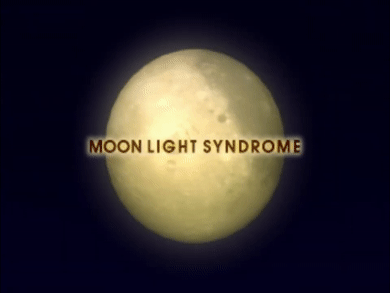Program: Noguchi, Toshio | Sound: Sugiyama, Chiharu | Screenplay: Kuriyama, Yuji
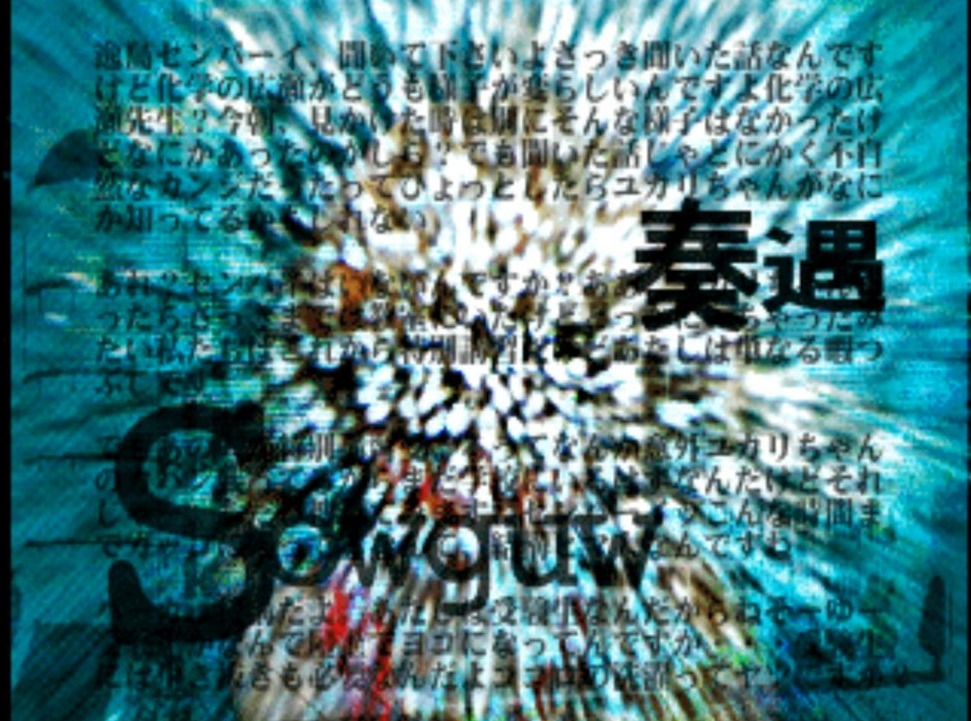
The chapter opens on Mika’s apartment complex, as she’s getting out in the morning to throw out the trash and go to school.
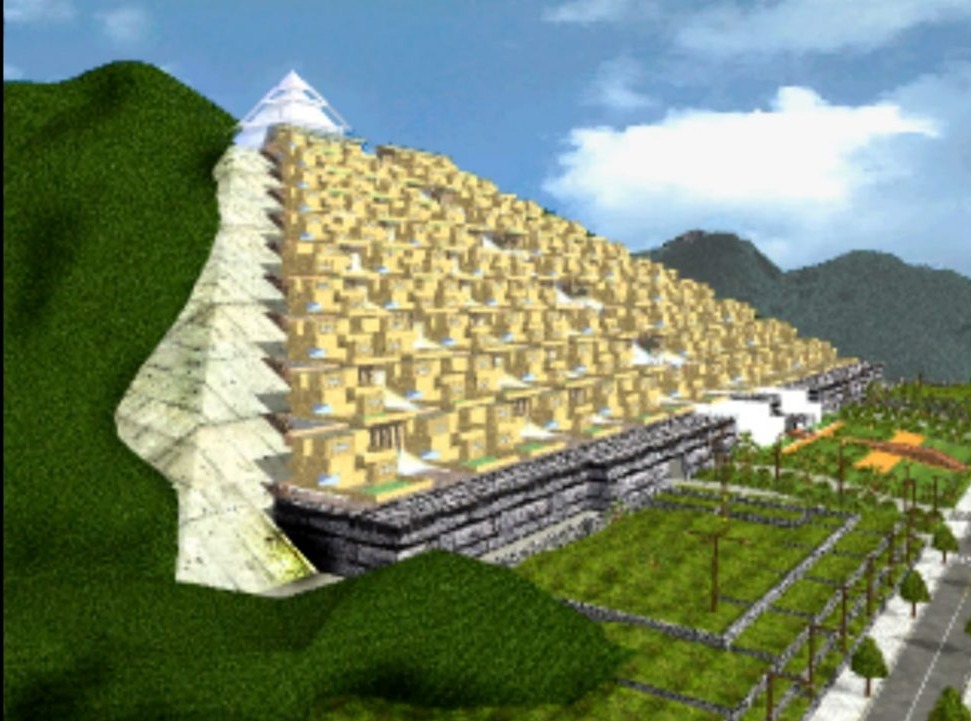
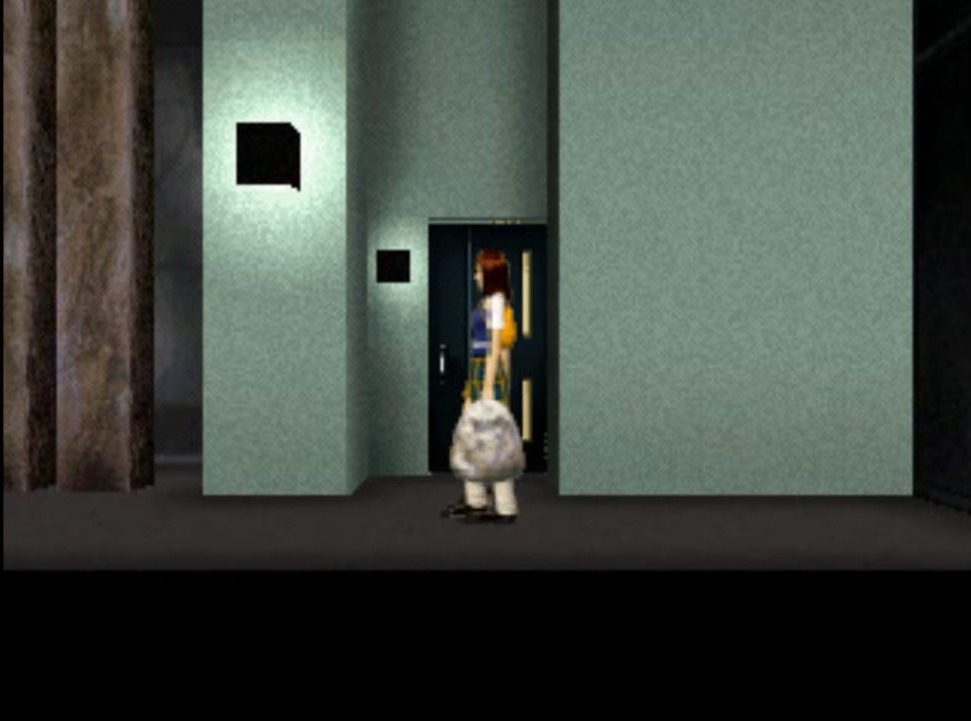
She manages to get to class just as the teacher is calling her name.
After class, she has a chat with Kazuki where they complain about their respective parents.
At this point, the player can choose to pressure Kazuki into giving out some rumors to investigate in order to escape her boredom. This is Mika’s personality from the Twilight Syndrome games coming back to the surface. It also shows some level of delusion on her part, since the past week alone has had several accidents and murders, one of which involved the man she was dating, which she refuses to acknowledge entirely. So clearly it’s not boredom she’s trying to escape but reality itself, which ties back to Aramata’s comments in プロローグ PROLOGUE.
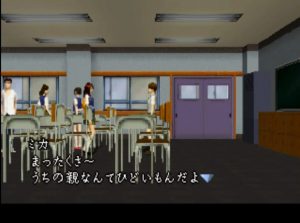
If pressured enough, Kazuki will say that the chemistry professor Hirose was acting erratically, which is enough to pique Mika’s interest. Mika then asks Kazuki if she is free after class, to which she responds that she’s busy with her club activities and suggests to Mika that she should go hang out with Yukari.
Coming out of the class, Arisa reminds Mika that they are supposed to meet up the next morning. Arisa is Mika’s underclassman, and also a member of the archery club alongside Chisato Itsushima. This is actually our introduction to her, and she’s gonna play a much larger role in the game than Mika’s classmates.
Getting to her senpai’s class, Mika meets up with Chisato and questions her about Hirose, but she claims not to have noticed anything unusual. Yukari is not in her class but Chisato claims she can’t be too far away since they have a special course coming up.
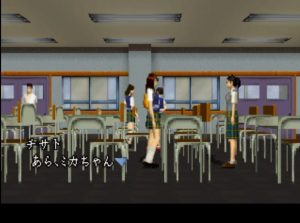
Mika eventually finds Yukari lying on the roof, ditching the special course in order to take a nap.
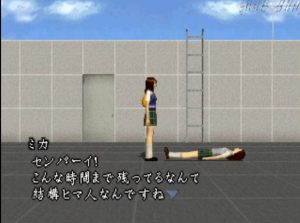
Mika tries to rope Yukari into her investigation over Hirose, but Yukari refuses to get involved. Mika then runs to the chemistry classroom and after ascertaining that someone is making noise in there, goes back to get Yukari.
The two start spying through the door and notice Hirose pacing back and forth suspiciously.
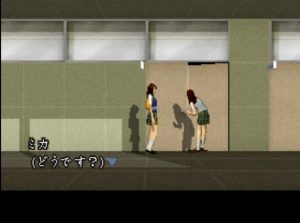
He then sprints out of the classroom and, as the two girls follow him, they see him run into the bathroom. (Implying that Hirose’s “suspicious” behavior was just the result of constipation or some other bathroom related issue.)
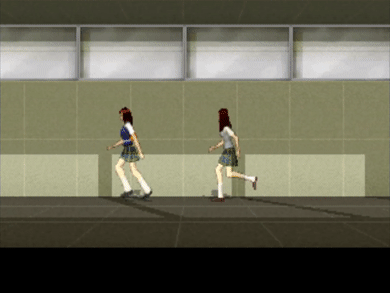
Yukari chastises herself for going along with another one of Mika’s schemes and leaves.
This entire segment can actually be skipped if the player elects not to pressure Kazuki for information, making this short chapter even shorter. Mika will still go visit Yukari, but without a distraction to latch on to, she will attempt to describe the weird phenomena that has been surrounding her since the beginning of the game, even mentioning the creepy cultist from プロローグ PROLOGUE. Yukari, however, will just fall asleep.
Mika makes for her home, but she’s interrupted by a lacrosse player who reminds her that she has to come to practice.
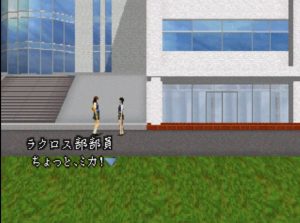
After practice, in the changing room, Mika is chastised by her teammates for her general laziness when it comes to sports.
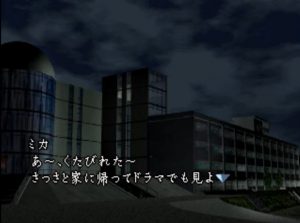
The girls then start discussing the death of Kyoko, whose head has gone missing, and the world seemingly freezes around Mika, turning black and white.
It’s interesting to note that Mika’s teammates are labelled as “Player A”, “Player B” and so on. This naming convention will be used a few times through the game, with examples like “Classmate A”, “Girl B” et cetera. I think the writer was deliberately trying to evoke the image of Japanese news reports on crimes involving minors. Japanese law actually prevents news outlets from releasing the names of minors involved in crimes, hence why they get labels like “Boy A” or “Girl B”. Notable examples include the Kobe child murders (which ironically led to the game itself being toned down) and the Sasebo slashing incident. Twilight Syndrome actually labelled unnamed characters with numbers instead (as in “Girl 1”), making it even more likely that this choice was deliberate.
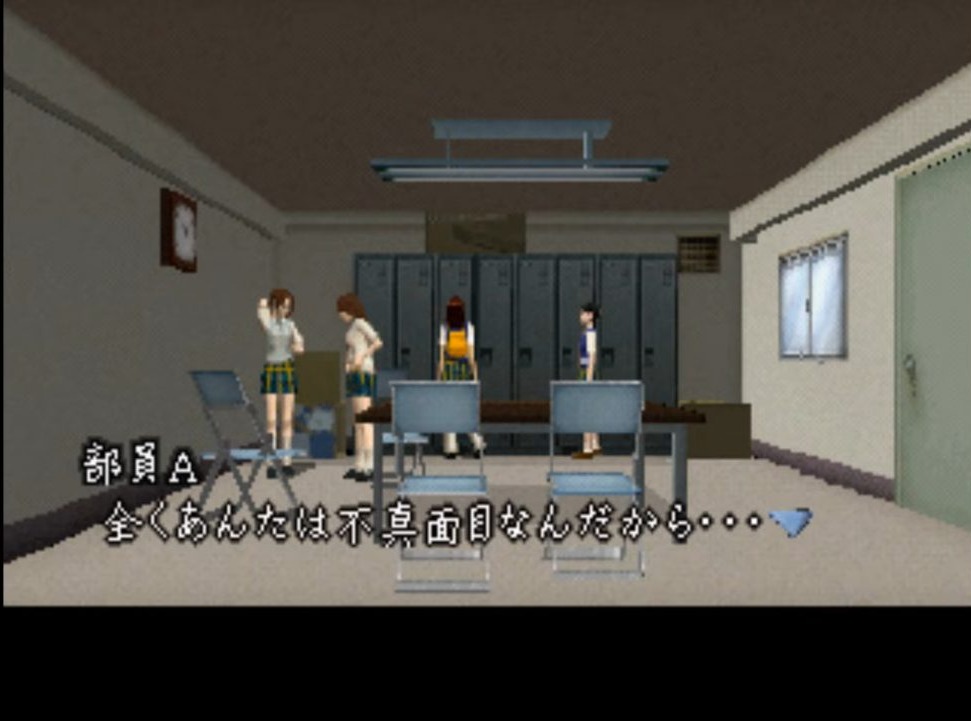
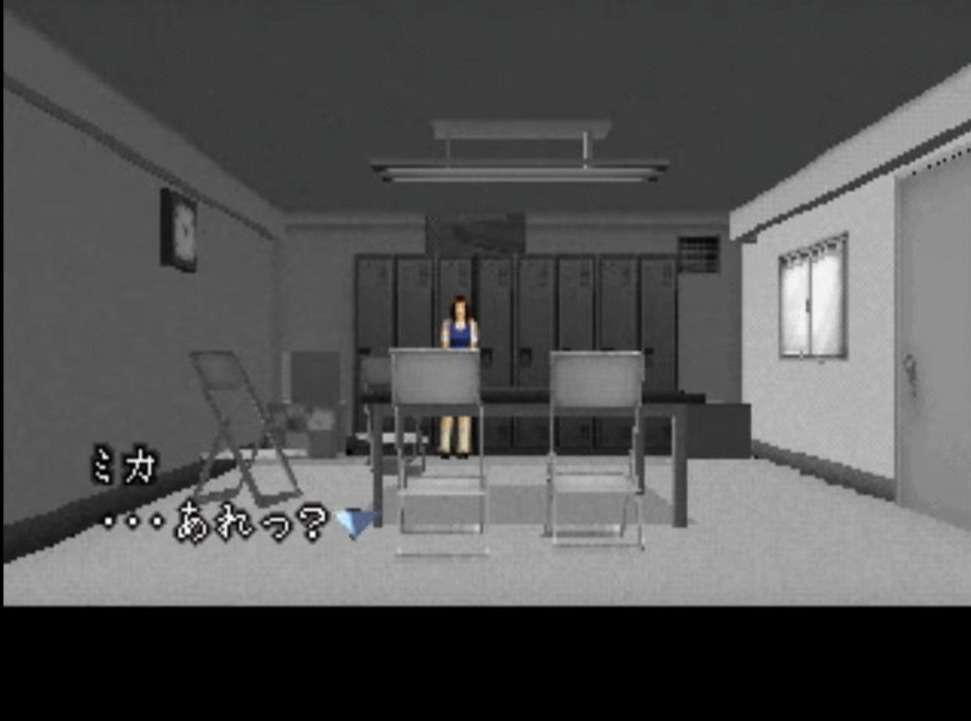
Mika quickly realizes she’s stuck in the changing room and Mithra makes his appearance, taunting her. She has a hard time remembering him, but he reminds her of their meeting when he presented her with the house keys she had lost.
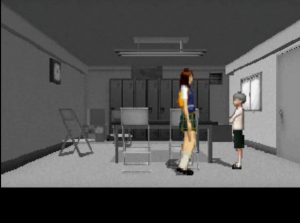
Mithra goes on to give Mika a lecture on the nature of humanity; on how human beings, despite their boasts, cannot accomplish anything individually, not even protect themselves. As such, they prefer to live in ignorance and subsidize their thinking to greater powers that exist beyond them. He also warns Mika that her fate has already been set in motion “that night” (referring to the fact that her life was already entangled with Mithra due to a contract being made in 陰約 INYAKU), but while pain and suffering await her, she shouldn’t be worried because he will come to liberate her immortal soul. His speech is actually remarkably close to what the cultist said to Mika in プロローグ PROLOGUE, namely the fact that Mithra is there to “save her soul” or “lead her soul to salvation”, further suggesting that the two are one and the same.
Mika then reappears in the changing room along with her teammates, seemingly having dreamed up the entire interaction.
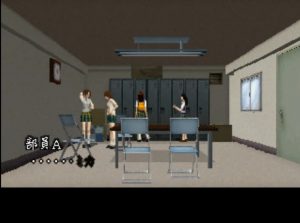
While nothing of note really happens in this chapter, it does show the rift that is slowly pushing Mika away from her friends Chisato and Yukari. Her two senpai are about to enter the adult world; as such, the investigations that the trio conducted in the original duology now seem childish, with the Hirose gag being almost a parody of Twilight Syndrome. Mika, however, is struggling with finding her own identity, which makes her resort to “acting out” the role of “Mika Kishii” in order to better fit in with her surroundings.
It also foreshadows the events of 開扉 KAIBYO, in which Mithra will break Mika’s faith in humanity in order to absorb or collect her soul, and of 慟悪 DOWAKU, in which Hirose will actually get killed due to his awkward behavior, shot by a police officer for a crime he did not commit.


